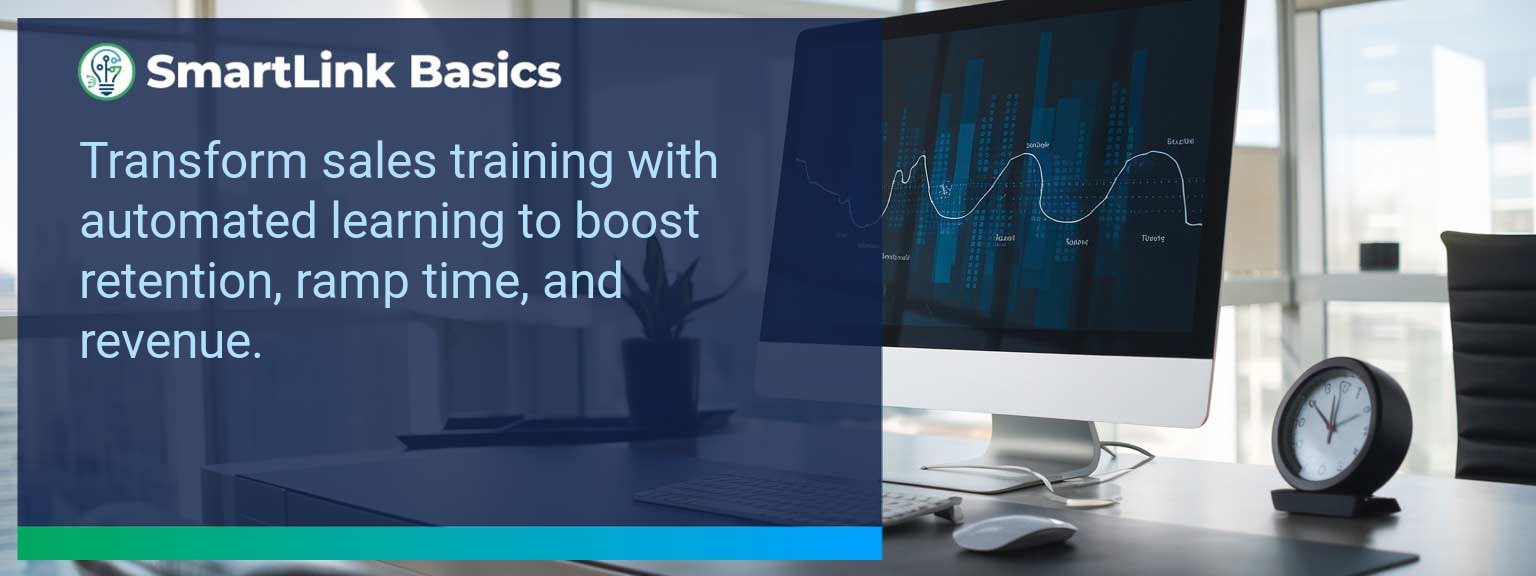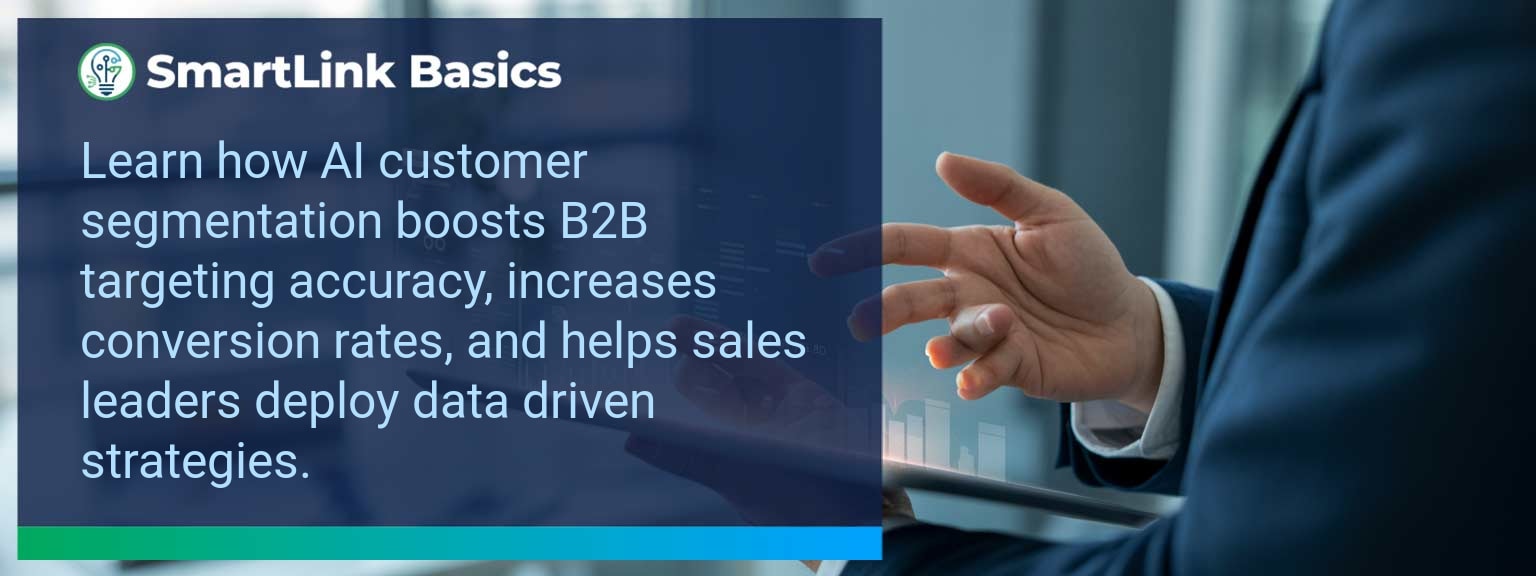Industry data shows that organizations adopting AI-driven automation achieve cost reductions of up to 30% while accelerating sales cycles by 20% or more (McKinsey, 2024). For sales leaders, AI automated workflows now define competitive advantage, enabling teams to reallocate time from repetitive tasks to high-value engagements. At SmartLink Basics, we help decision-makers implement these systems strategically, ensuring they integrate with existing revenue operations. In this article, you’ll see how AI automated workflows power business outcomes, the common obstacles that slow adoption, and practical steps to optimize processes. You’ll walk away with proven examples, a 90-day action blueprint, and measurable KPIs to track results.
- Automate repetitive administrative and CRM updates with AI.
- Integrate machine learning to personalize outreach at scale.
- Streamline approvals, quotes, and contract workflows for speed.
- Use predictive analytics to prioritize sales opportunities.
- Track adoption and performance with targeted metrics.
AI Automated Workflows: What Changed and Why It Matters
AI adoption has shifted from experimental to operational, making automated workflows a standard in high-performing sales organizations. The real advantage lies in combining workflow automation with artificial intelligence workflows to optimize every step of the revenue process. Sales leaders now use AI to synchronize touchpoints, reduce manual inputs, and ensure faster execution. For example, a B2B SaaS leader introduced automated lead enrichment and routing, cutting qualification time by 60%. Actionable insight: Audit processes for time-intensive handoffs and apply AI where repeatability is high.Redesign the Revenue Operating System With AI Automated Workflows
ICP, Segmentation, and Targeting AI-enabled segmentation uses historical wins, firmographic, and behavioral data to dynamically update ICP profiles. This ensures targeting precision without quarterly re-work. Pipeline Architecture Automated workflows push opportunities through the right stages based on engagement signals. AI flags at-risk deals for intervention. Plays and Messaging Integrated automation tools deliver personalized sequences based on buyer activity, increasing relevance at every touchpoint. Operating Cadence AI schedules follow-ups, forecast calls, and account reviews based on actual pipeline movement rather than static calendars. Actionable insight: Implement automation that adapts in real-time to both internal and buyer-driven events.Common Obstacles To Achieving Seamless Automation
The most frequent challenges are fragmented systems, inconsistent data quality, and cultural resistance. Without a unified data layer, automation amplifies errors rather than solving them. Coca-Cola Europacific Partners reported needing a full data governance upgrade before AI could improve sales workflows. Leaders must first assess infrastructure readiness and train teams to trust AI-influenced recommendations. Actionable insight: Before deployment, establish clean data practices and a single source of truth.Implementing AI To Optimize Workflows
Effective deployment of AI process optimization starts with mapping current-state processes, identifying friction points, and matching them with automation tools. For example, automating proposal generation based on CRM opportunity data can reduce turnaround from three days to one hour. Solutions combining business process automation platforms with machine learning integration enable continuous performance improvement. Actionable insight: Pilot in one high-impact stage, measure, and then expand.Tangible Benefits From Automated Processes
The benefits extend beyond time savings — sales leaders gain a scalable system. Tangible outcomes include faster quote-to-close, higher lead conversion, and better forecast accuracy. A manufacturing firm implemented AI-assisted order processing and cut errors by 40%, improving on-time delivery rates. Actionable insight: Track both speed and accuracy to measure workflow automation effectiveness.Metrics That Matter
| Category | Metric | Definition | Target |
|---|---|---|---|
| Leading | Workflow Completion Rate | % of automated sequences executed without manual intervention | 95%+ |
| Leading | AI Suggestion Adoption Rate | % of AI-generated action recommendations executed by reps | 80%+ |
| Lagging | Cycle Time Reduction | Decrease in time from lead entry to closed-won | 20%+ |
| Lagging | Revenue Per Rep | Average sales revenue generated per sales rep per quarter | +15% YoY |
| Quality | Automation Error Rate | % of workflows that trigger incorrect outcomes | <1% |
| Quality | Customer Satisfaction Post-Automation | Average CSAT score after automation implementation | ≥ 4.5/5 |
Innovations And Next Steps For AI Automation
Emerging capabilities like AI-generated playbooks, intent-driven dynamic routing, and integrated AR for virtual product demos are shaping the next wave of sales automation. Companies integrating these tools early will outpace competitors in speed and personalization. Actionable insight: Stay ahead by testing emerging automation features quarterly and aligning them with evolving buyer expectations.Get the 90-day plan, coaching rubric, and dashboard template to operationalize AI in your enablement program.
Turning AI Automation Into a Revenue Multiplier
AI automated workflows are now a strategic lever for predictable, scalable growth. This guide outlined current applications, adoption challenges, a 90-day execution plan, and measurable success criteria. To make automation pay off, sales leaders should integrate tools into one cohesive operating system and review results monthly for continuous improvement. Access more AI-driven sales enablement resources from SmartLink Basics to design a high-performance automation strategy. Sales leaders are seeing the gap widen between high-performing teams and those struggling to keep pace. According to industry benchmarks, organizations with strong sales leadership deliver over 20% higher revenue growth compared to peers. At SmartLink Basics, we work with decision-makers who understand that leadership in sales is not about managing deals—it’s about shaping an environment where performance thrives. This article outlines actionable sales leadership strategies to create clarity, drive consistent results, and sustain improvement in competitive markets.- Define a clear sales vision and align team objectives to it
- Use data-driven insight to guide coaching and decision-making
- Optimize sales processes for efficiency and scalability
- Foster a high-performance culture through recognition and accountability
- Continuously review performance metrics to sustain improvement
What Changed and Why It Matters Now for Sales Leadership Strategies
Sales leaders are under pressure to respond to shifting buyer expectations and market complexity. Traditional playbooks are less effective when customers are engaging through more channels and demanding higher relevance. Competitive advantage now hinges more on how teams execute than on the uniqueness of the product. For example, companies with clearly communicated sales team management priorities often outperform on conversion rates, even in flat markets. The actionable insight here: regularly align your team’s activities to strategic goals and remove operational ambiguity.Redesign the Revenue Operating System With Sales Leadership Strategies
A well-designed operating system guides sales performance improvement across all roles. This includes four core components. ICP, Segmentation, and Targeting Defining the ideal customer profile and segment priorities helps focus resources where they can drive the greatest return. For instance, narrowing targeting criteria improved one client’s win rate by 17%. Pipeline Architecture An engineered pipeline ensures every stage has defined exit criteria and common language. This reduces deal slippage and increases forecast accuracy. Plays and Messaging Prescriptive plays, aligned with buyer triggers, ensure consistent engagement quality. Teams with updated messaging frameworks see faster response rates. Operating Cadence Weekly deal reviews, monthly business reviews, and quarterly strategy resets keep leadership in sales aligned and agile.Common Obstacles To Sales Success
Even with a strong framework, sales coaching efforts can fail if leaders overlook these challenges: Lack of clarity in expectations leads to inconsistent performance. Inadequate training reduces the team’s ability to adjust to market changes. Poor process discipline allows revenue leakage. A practical example: teams without a documented account planning process often waste energy chasing low-potential opportunities. Action step: Audit your sales process at least twice a year, checking for pipeline bottlenecks and customer engagement gaps.Implementing Effective Sales Leadership Strategies
Execution requires balancing strategy with consistent frontline management. That means coaching to individual performance data, recognizing progress, and articulating the “why” behind changes. For instance, pairing weekly skill focus areas with peer feedback sessions can accelerate capability development without additional budget. The move that makes the difference: ensure every manager spends structured time coaching, not just reporting numbers.Measuring The Impact On Performance
Tracking results is more than reviewing closed deals. Leaders should monitor leading, lagging, and quality indicators.| Category | Metric | Definition | Target |
|---|---|---|---|
| Leading | Qualified Opportunities Created | Number of new deals entering pipeline meeting ICP criteria | +15% QoQ |
| Lagging | Revenue Closed | Total sales revenue booked in period | Exceed target by 5% |
| Quality | Customer Retention Rate | Percentage of customers retained over 12 months | >90% |
Evolving Leadership Approaches For Continued Success
As markets change, leadership in sales must evolve with them. Future-focused leaders invest in technology integration, adapt coaching methods to generational shifts, and refine messaging for emerging buyer needs. Example: A global manufacturer shifted their sales process optimization cadence from quarterly to monthly, improving adaptability and responsiveness. Actionable takeaway: maintain an agile review rhythm to address performance issues before they escalate.Get the 90-day plan, coaching rubric, and dashboard template to operationalize AI in your enablement program.









